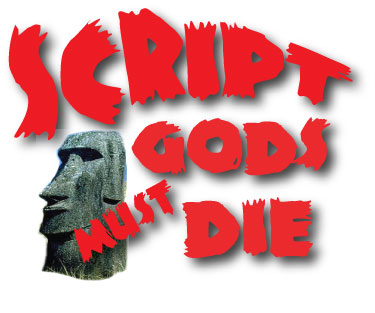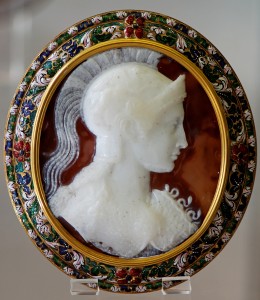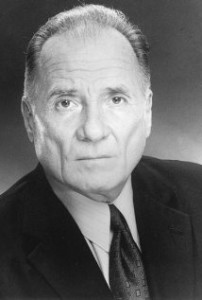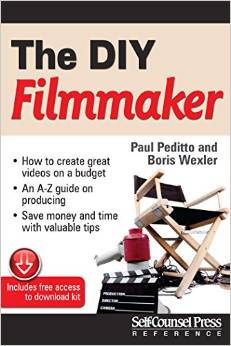“Story is free.” –John August
With micro-budget filmmaking you need to lean on the written word to keep costs down. Think about costs at script level. Don’t wait until you get on set to try to save a dime. One of the ways to do this is to create strong sub-plot characters.
Think about tributaries out of the Mississippi river. Imagine your POV character, the protagonist, as the Mississippi. The smaller rivers flow into or out of the main river. They exist in and of themselves, having beginning and end points, but feed the main river and wouldn’t exist without it.
Same deal with sub-plot characters. They have full arcs, they need to change and grow, have wants and needs, should be multidimensional “gray” characters in of themselves. They are the B and C stories that exist only to further the journey of the A-story, the protagonist.
For low-budget Indie and micro-budget movies, there are other motives for writing in strong sub-plot characters and cameos. Cameo characters that can be scheduled for a single day. This allows for the potential of paying the day rate of a “name actor”. Why would you do that? Because a name actor can you help sell the project. It gives you cache with distributors. So, the question then becomes: Do you spend money on the name actor up front, and reap the reward on the back end? You certainly do not need names to make your micro-budget, but it should be in the discussion.
Great subplot characters attract great actors. We’ll talk about using SAG actors another time but for now, let’s look at a couple small characters I wrote for Jane Doe that had major impact on story, and brought us strong actors, even for a single-day’s pay.
- JANE’S DAD
Scheduled for one looooong day, three big dialogue scenes. Among the actors interested in this role or discussed were Paul Sorvino, Vic Argo, Dan Hedaya, and Peter Boyle. We ended up going with Joe Ragno (Shawshank Redemption) who was a great choice. His one day was the final one of the shoot, took 15+ hours, with the martini shot coming at dawn. He never complained once and delivered the goods.
The character was critical to the story but didn’t exist in the play (the movie’s source material) and was only added later. Here’s the last of the three scenes. Notice that the protagonist, Horace, says next to nothing. Let your cameo characters…go off. Big dialogue scenes and micro-budget were made for each other.
INT. LIVING ROOM- NIGHT
Horace sits on the plastic-covered couch. Jane, passed out on his shoulder. Jane’s Dad sits on the plastic-covered seat across from them. A baseball game play on the TV.
Jane’s Dad: You know what you’re getting yourself into?
Horace just looks back at him.
Jane’s Dad: Jane Marie never brought any man to this house. You’re the first. Are you two serious?
Horace: Yeah, we are.
Jane’s Dad stares at him.
Horace: We are.
Jane’s Dad gets up and turns the baseball game off.
Jane’s Dad: What did she tell you about me?
Horace: I don’t know. She said things haven’t been good. You had a fight—
Jane’s Dad: A fight? (laughs) Yeah, we had a fight. A few fights. You’ll have ‘em too. And that disappearing act, you get ready for that. Last time I threw her out, for good. It was a couple months ago. Maybe just before she hooked up with you.
Horace looks back, nothing to say.
Jane’s Dad: “I was never much of father. I don’t want to lay it on anyone. Jane’s mother died when she was four. And whatever it is that mothers and daughters have together, we never had that.”
Horace: She never talks about her.
Jane’s Dad: “She don’t remember. I’m gonna tell you a story and we’ll call it a night. When Jane Marie turned 21 she disappeared off the face of the earth. Took her four weeks to go through a trust fund I set up for her. 20,000 dollarts in four weeks. And when it was gone she came to me crying. Arms all black and blue. Needle marks, like a pin cushion. Said she couldn’t stop. Couldn’t, wouldn’t…who cares. So you know what I’d do. Every night I’d drive her up to a park in the South Bronx and I’d sit in the car. And I’d watch her crowd in with them. Walking dead I called ‘em. Thieves, junkies, the scum of the street. I’d wait in the car until she…she did whatever it is that she does, you know. I don’t know why I put with it, I don’t know I stopped. I only know I couldn’t stand to see her in pain. I couldn’t stand it.
Horace looks back at him, no words.
- JOHNNY BIANCHI
Another three scene character that impacted plot. Bianchi was the craps instructor modeled after my real-life craps God/teacher who molded your humble narrator into casino service. Think a dice-carrying drill sergeant, Ginzo Italian-style.
We got Arthur Nascarella (The Sopranos) interested. The single-day shooting schedule didn’t kill us in terms of cost while also giving the actor more opportunity to say yes (because it’s just a day of shooting). Keep the scheduling flexible and maybe you’ll get a terrific actor for your own movie.
Same deal with this scene. Horace, the protagonist, just lets the cameo character go off.
EXT. JITNEY STOP- DAY
Horace sits, waiting for a jitney. With him is JOHNNY BIANCHI, 50’s, a graying Ginzo Italian, waiting with him, much more impatiently.
BIANCHI: This is bullshit. These godamn jitneys… I got a ’96 Porsche Turbo in the shop and I’m standing here waiting for a jitney like a mook. You know what Einstein said? He said God don’t roll know dice. (to Horace) What’s that mean to you?
Horace looks up at him, speechless.
BIANCHI: Exactly. Don’t mean shit to me either. It means Einstein didn’t know gatz about dice. Means Einstein was a mook.
Horace just going with it now, looking back as…
BIANCHI: You know what my philosophy is? (pulls out a money clip, a $100 buck bill outside, many more inside) That’s my philosophy. A man’s got cash, he rates. You got no cash, you’re a putz.
Horace with no words…at all.
BIANCHI: You’d like my car. It’s a nice car, man, love that ride. But I’d trade that car in tomorrow morning, wouldn’t bat an eye. Wanna know why? Because it’s a trap. Things are never as they seem, my man, you remember that. Take a guy, standing on the corner. Light changes, he crosses, goes on his way. Second guy stands on the corner. Light changes, he crosses… BAM!
Horace jumps.
BIANCHI: Hit by a City Sanitation truck. Big blue, brother. Pennsylvania steel. One guy’s gone, one guy’s roadkill. Why? Who the fuck knows why… (checking his watch) I know one thing. Fuck this bus. Tell ya what you do. Take this (pulling out a card, forcing it on Horace) You give me a call sometime. I’ll change your life.
Bianchi walks off. Horace looks at the card. It’s for a local casino school.
The story requires Horace to end up at casino school and Bianchi is the device to make that happen. With five pages total, he’s also a character that can be scheduled for a single day. While Arthur was two years away from The Sopranos and not a “name”, he was a strong actor attracted to a juicy cameo, something that you should be considering for your own movie.
Makes sense on many levels.





